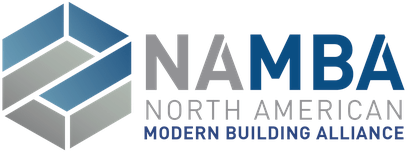Material Fire Performance – Comparative Testing
One of the most energy-efficient applications of foam plastic insulation is its use to insulate, seal and establish a weather barrier in exterior walls of buildings. Under the International Building Code® (IBC), certain types of buildings are required to have exterior walls of noncombustible construction. Combustible materials are permitted in these walls subject to certain conditions and testing requirements. Foam plastic is one of the materials permitted when meeting these special requirements. Among the requirements is testing and compliance of the exterior wall assembly with NFPA 285.
NFPA 285, Standard Fire Test Method for Evaluation of Fire Propagation Characteristics of Exterior Wall Assemblies Containing Combustible Components, is published by the National Fire Protection Association (NFPA). The test method evaluates flame propagation and heat rise of exterior wall assemblies with combustible components. The standard has a set of acceptance criteria limiting flame propagation distance and maximum temperatures in the test specimen. The test method was established recognizing that walls containing combustible components need to be evaluated for contribution to fire spread vertically or horizontally in certain types of construction. NFPA 285 is an assembly test, meaning that the entire exterior wall assembly is evaluated by the test as opposed to individual materials or components of an assembly.
NFPA 285 referenced in the International Building Code® (IBC) is applicable for exterior walls assemblies containing combustible materials such as foam plastic insulation, water-resistant barriers and combustible exterior wall coverings and systems. This requirement applies to Construction Types I through IV. The NFPA 285 test is 30 minutes in duration and follows a specific fire exposure regimen.
NFPA 285 assemblies are tested by accredited laboratories and certified by accredited certification agencies. Underwriters Laboratories, DrJ Engineering and Intertek Testing Services (among others?) all provide listing and/or evaluation reports for wall assemblies tested to NFPA 285.
Today’s NFPA 285 fire test, replicating a post-flashover interior room fire breaching the exterior wall assembly through a window, is designed to evaluate:
- Vertical and lateral flame spread over the exterior face of the wall assembly.
- Vertical and lateral flame spread within the wall’s core, cavities or within the combustible components.
- Vertical and lateral flame spread from the compartment of fire origin to adjacent compartments or spaces.
NFPA 285 is a multi-story exterior wall assembly test conducted on a test specimen that is approximately 18 feet high and 14 feet wide, with a 78-inch wide window opening into the first floor room. The fire sources are two gas burners, one located inside the first floor room and the other on the exterior side and in the area of the window header. This set-up simulates a flashover where the fire suppression system has failed and all interior materials are burning. The burn (and test) lasts for 30 minutes.
The test assembly is mounted on the face of the apparatus, also called the test facility. Thermocouples are fitted in or on the various assembly layers, such as on the exterior wall surface, in the wall cavity air space, in stud cavity and in the insulation. The number and specific placement of the thermocouples depends on the specific configuration of the test specimen.
An exterior wall assembly will pass the test if all of the acceptance criteria stipulated in the test method have been met. These include limiting vertical and lateral flame progression (visual) in certain locations and avoiding temperatures exceeding 1000°F, exceeding 750°F, and exceeding 500°F in certain locations. Flame spread cannot exceed 10 feet above the top of the window, or more than 5 feet laterally from the centerline of the window.
History of NFPA 285 Standard Fire Test Method for Evaluation of Flame Propagation Characteristics of Exterior Wall Assemblies Containing Combustible Components in U.S. Building Codes
Driven by more stringent energy codes in the late 1970s, foam plastic insulation was proposed for use as exterior insulation on noncombustible construction.
In the early 1980s, the Society of the Plastics Industry (SPI) convened an Exterior Wall Task Group with a stated goal of developing a large-scale fire test that could qualify the use of foam plastic insulation on buildings that were Types I-V construction. Based on input from code officials with expertise in fire science and fire testing, a program was designed to address a typical fire scenario where an interior compartment fire achieves flashover, then breaks through a window to expose the exterior of the wall. The test must evaluate the vertical and lateral spread of fire within or across the wall, thereby limiting the exterior wall’s contribution to flame propagation from room to room or floor to floor. The result of numerous tests and extensive discussions was the development of the UBC 26-4 test, followed by the UBC-26-9 test and then ultimately the NFPA 285 test standard.
In the early 1990s, SPI conducted a second test program to develop a new version of the UBC 26.4 test. That work resulted in the “intermediate-scale” UBC 26-9 test which was adopted by NFPA in the late 1990s as NFPA 285. NFPA has maintained the NFPA 285 test method ever since.
This wall assembly test has proven to be a reliable measure of fire performance since 1988 when it was first adopted into the model building codes. As evidenced by exterior fire events reported internationally, there is a comparative absence of significant exterior wall fires for buildings properly designed and constructed in compliance with the building code requirements including (1) sprinklers and (2) either NFPA 285 and IBC Chapter 14 and 26 compliant exteriors or non-combustible exteriors.[i],[ii],[iii]
NAMBA supports the specification, design, fabrication, installation and inspection of NFPA 285 compliant assemblies along with other fire protection measures as required by code. Evidence shows that NFPA 285 has been a reliable and robust means of assessing fire performance for more than 30 years.
[i] Wieczorek, C.J., Grenfell: The Perfect Formula for Tragedy, FM Global, 2017, www.fmglobal.com/insights-and-impacts/2017/grenfell-tower-white-paper
[ii] BRANZ, Fire Performance of Exterior Claddings, Fire Code Research Reform Program, April 2000. http://www.abcb.gov.au/Resources/Publications/Research/FCRC-Fire-Performance-of-Exterior-Claddings
[iii] White, N. and Delichatsios, M. (2014). Fire Hazards of Exterior Wall Assemblies Containing Combustible Components, Fire Protection Research Foundation, www.nfpa.org/foundation
Engineering Judgment and Analysis
Modern exterior wall assemblies contain multiple components, thereby posing a challenge to perform large-scale testing of every potential configuration. A practical and recognized approach to establish code compliance is through the use of an engineering analysis conducted by a competent fire test expert. This results in an extension letter or engineering judgement (EJ). The International Building Code® (IBC) permits these alternative means of compliance under the duties and powers of the Building Official for approving the use of alternative materials, design and methods of construction and equipment. The Building Official has the authority to consider these types of evaluations in the approval of assemblies that are similar to those that were actually tested. The use of engineering analysis to qualify designs is widely accepted in the construction industry and has long been used in structural engineering fields
For these analyses, an existing NFPA 285 test or tests are used as the basis for evaluating how proposed changes in materials will alter compliance with NFPA 285. At the end of the process, the Building Official determines whether the submitted EJ(s) is sufficient for approval of the assembly. Generally, EJ reports should:
- Be based on at least one NFPA 285 test and sound fire protection engineering.
- Provide a means to connect proposed and tested assemblies through data.
- Assess variations in installation and/or change or substitution of components presented by the proposed assembly.
- Determine that the proposed assembly either will or will not continue to comply with NFPA 285.

